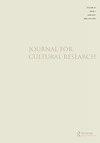“知根知底”:《女巫》中的女性性取向和男权解放
IF 0.6
Q1 CULTURAL STUDIES
引用次数: 0
摘要
摘要在2015年的《女巫》中,被孤立和打击的主人公托马辛最终拒绝了自己的清教教养,成为了一名女巫,接受了魔鬼的邀请(伪装成家里的山羊黑菲利普)。这篇文章将讨论托马辛的性解放,她从专制的“父亲法则”转向以女巫的形式出现的女性解放。托马辛从女孩过渡到女性,但他不想以父权制和压迫统治的清教徒式的限制方式这样做。她以女巫的形象拥抱自己的性取向,以欲望的形象黑菲利普帮助她获得自由,从而成为一名女性。西方民间传说将山羊视为生育、独立和欲望的象征;黑菲利普是一个代表着与狂野欲望联系的人物。因此,黑菲利浦不仅成为魔鬼的身体表征,也是托马辛性欲的象征性表征。这部作品借鉴了可怕的女性理论(克里德、克里斯特娃、阿诺德)、民间传说的象征意义和弗洛伊德的伊莱克特拉情结,认为尽管《女巫》传达了女性赋权的信息,但它不能完全拒绝或逃避父权制话语。本文章由计算机程序翻译,如有差异,请以英文原文为准。
‘Better the devil you know’: feminine sexuality and patriarchal liberation in The Witch
ABSTRACT At the end of 2015‘s The Witch, isolated and beaten protagonist, Thomasin, ultimately rejects her puritanical upbringing to become a witch, accepting the invitation of the Devil (in the guise of the family’s goat Black Philip). This essay will discuss Thomasin’s sexual deliverance in terms of her turning away from the authoritarian ‘Law of the Father’ towards female liberation that comes in the form of the Witch. Thomasin transitions from girl to woman, but does not want to do so in the restrictive Puritan fashion where patriarchy and oppression rules. She becomes a woman by embracing her sexuality in the figure of the witch and Black Philip as the figure of lust helping her become free. Western folklore posits the goat as a symbol of fertility, independence, and lust; Black Philip is a figure who represents a connection to wild desires. Therefore, Black Philip becomes not only a physical representation of the devil, but also a symbolic representation of Thomasin’s sexual desire. Drawing on theories of the monstrous-feminine (Creed, Kristeva, Arnold), the symbolism of folklore and Freud’s Electra complex, this work argues that, despite its message of feminine empowerment, The Witch cannot fully reject or escape patriarchal discourse.
求助全文
通过发布文献求助,成功后即可免费获取论文全文。
去求助
来源期刊

Journal for Cultural Research
CULTURAL STUDIES-
CiteScore
1.40
自引率
0.00%
发文量
23
期刊介绍:
JouJournal for Cultural Research is an international journal, based in Lancaster University"s Institute for Cultural Research. It is interested in essays concerned with the conjuncture between culture and the many domains and practices in relation to which it is usually defined, including, for example, media, politics, technology, economics, society, art and the sacred. Culture is no longer, if it ever was, singular. It denotes a shifting multiplicity of signifying practices and value systems that provide a potentially infinite resource of academic critique, investigation and ethnographic or market research into cultural difference, cultural autonomy, cultural emancipation and the cultural aspects of power.
 求助内容:
求助内容: 应助结果提醒方式:
应助结果提醒方式:


